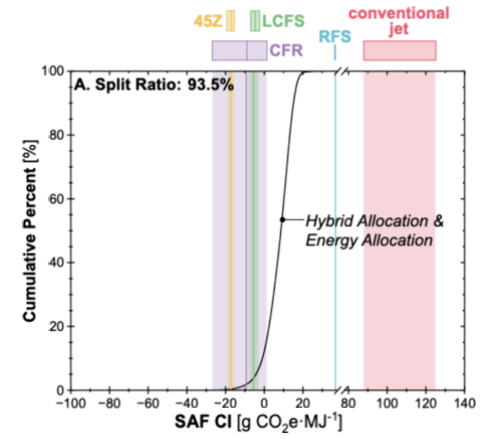Greenhouse Gas Accounting Procedures in Low Carbon Fuel Policies Overlook the Spatial Variability of Miscanthus-Derived Sustainable Aviation Fuel
Themes: Sustainability
Keywords: Economics, Modeling, Sustainable Aviation Fuel
Citation
Stewart, D.W., Guo, W., Li, Y., Fan. X., Coppess, J.W., Khanna, M., Guest, J.S. June 30, 2025. Data from: “Greenhouse Gas Accounting Procedures in Low Carbon Fuel Policies Can Undervalue Benefits of Biomass-Based Sustainable Aviation Fuel.” GitHub.
Overview

This module allows BioSTEAM users to consider the impacts of economic and environmental parameters that vary by location. Current location-specific data includes income, property, fuel producer, and sales tax rates; feedstock prices (corn, corn stover, and sugarcane); electricity prices; natural gas prices; location capital cost factors (LCCFs), and tax incentives (available as of February 2020) for all 50 states in the US.
Stewart et al. [1] is the first paper to utilize BLocS to explore the influence of policy incentives and location-specific economic parameters on the financial viability of three different biorefineries.
Follow these steps to replicate the results in [1]. Note: the authors are currently working to improve BLocS implementation. These exact methods may become deprecated, but you will still be able to achieve identical results.
After downloading BLocS, open and run evaluation.py.
Data
GitHub: Python script, BLocS, tests
Download (11.6 KB) includes:
- Sensitivity analyses
- Input parameter values
- Carbon intensities